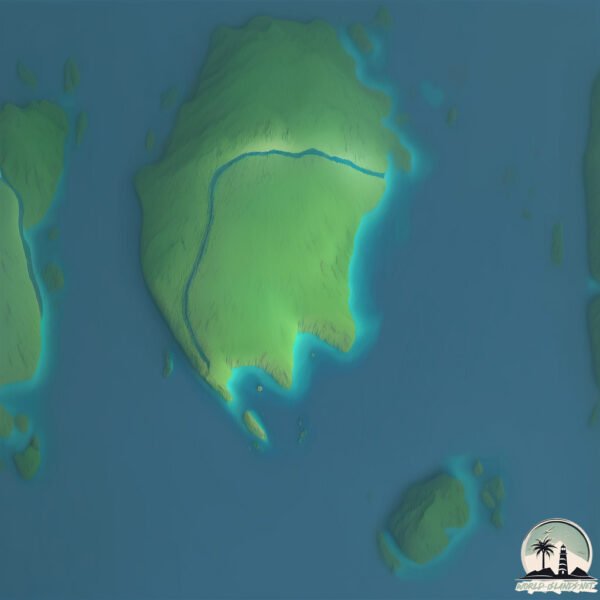Île Nengé

Welcome to Île Nengé, a Tropical island in the Gulf of Guinea, part of the majestic Atlantic Ocean. This guide offers a comprehensive overview of what makes Île Nengé unique – from its geography and climate to its population, infrastructure, and beyond. Dive into the details:
- Geography and Size: Explore the island’s size and location.
- Climate and Weather: Weather patterns and temperature.
- Topography and Nature: Uncover the natural wonders of the island.
- Infrastructure and Travelling: Insights on reaching, staying, and making the most of your visit.
- News and Headlines: Latest News.
Geography and size of Île Nengé
Size: 0.819 km²
Coastline: 3.6 km
Ocean: Atlantic Ocean
Sea: Gulf of Guinea
Continent: Africa
Île Nengé is a Tiny Island spanning 0.819 km² with a coastline of 3.6 km.
Archipel: –
Tectonic Plate: Africa – One of the world’s largest tectonic plates, covering the African continent and parts of the surrounding oceans, known for its stability with some active rift zones.
The geographic heart of the island is pinpointed at these coordinates:
Latitude: -0.68978847 / Longitude: 9.09729978
Climate and weather of Île Nengé
Climate Zone: Tropical
Climate Details: Tropical Savanna, Wet
Temperature: Hot
Climate Characteristics: Defined by distinct wet and dry seasons with high temperatures year-round. Pronounced rainfall occurs during the wet season, while the dry season is marked by drought.
Topography and nature of Île Nengé
Timezone: UTC+01:00
Timezone places: Europe/Paris
Max. Elevation: 0 m
Mean Elevation: 0 m
Vegetation: Open Woodland
Tree Coverage: 95%
The mean elevation is 0 m. The highest elevation on the island reaches approximately 0 meters above sea level. The island is characterized by Plains: Flat, low-lying lands characterized by a maximum elevation of up to 200 meters. On islands, plains are typically coastal lowlands or central flat areas.
Dominating Vegetation: Open Woodland
Characterized by sparsely distributed trees with open canopy allowing sunlight to penetrate, supporting grasses and shrubs underneath. Often found in drier or transitional environments. Île Nengé has a tree cover of 95 %.
Vegetation: 3 vegetation zones – Moderately Diverse Island
These islands start to show a broader range of ecological niches. With three vegetation zones, they may offer a mix of ecosystems like coastal areas, inland woods, and perhaps a distinct wetland or dry area. This diversity supports a wider range of flora and fauna, making these islands more ecologically complex than those with minimal diversity.
Infrastructure and Travelling to Île Nengé
Does the island have a public airport? no.
There is no public and scheduled airport on Île Nengé. The nearest airport is Port Gentil Airport, located 38 km away.
Does the island have a major port? no.
There are no major ports on Île Nengé. The closest major port is PORT GENTIL, approximately 33 km away.
The mean population of Île Nengé is 23 per km². Île Nengé is Gently Populated. The island belongs to Gabon.
Continuing your journey, Île Mandji is the next notable island, situated merely km away.
Gabon is classified as Developing region: Regions characterized by lower income levels, with economies in the process of industrialization and modernization. The level of income is Upper middle income.
News – Latest Updates and Headlines from Île Nengé
Stay informed with the most recent news and important headlines from Île Nengé. Here’s a roundup of the latest developments.
Please note: The data used here has been primarily extracted from satellite readings. Deviations from exact values may occur, particularly regarding the height of elevations and population density. Land area and coastline measurements refer to average values at mean high tide.
